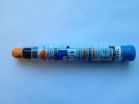(Press-News.org) Frequent drinking can establish changes in the processing of alcohol cues that can, in turn, facilitate renewed drinking unless the resulting impulse to drink is inhibited.
A new study has looked at the interaction between automatically activated approach tendencies and adolescent ability and motivation to inhibit and reflect upon drinking behaviors.
Results show that stricter parental rules about drinking are highly protective, especially for males.
Frequent drinking can lead to changes in the processing of alcohol cues that can, in turn, facilitate renewed drinking if an individual's ability and motivation to reflect on drinking behaviors are insufficient. A study investigating the interaction between automatically activated approach tendencies and the ability and motivation to reflect on drinking behaviors in young adolescents with limited drinking experience has found that stricter parental rules about drinking are highly protective, especially for males.
Results will be published in the May 2012 issue of Alcoholism: Clinical & Experimental Research and are currently available at Early View.
"With repeated alcohol use, cues that are previously associated with alcohol use – such as the sight of a beer bottle – become increasingly important," explained Sara Pieters, a researcher at Radboud University Nijmegen and corresponding author for the study. "This might be due to alcohol-induced changes in the brain's reward system and the formation of memory associations."
The term "approach tendencies," Pieters added, can be understood by asking if a person is inclined to approach or to avoid a stimulus. "In most people," she said, "tendencies to avoid are automatically triggered by threatening stimuli such as a snake, and approach-tendencies can be triggered by appetitive stimuli such as water when thirsty. In heavy drinkers, stimuli that have been associated with alcohol use automatically trigger a tendency to approach."
"Studies have shown that adolescence is marked by a temporal lag in the maturation of two brain systems, one related to emotional and motivational processes, one to control behavior and thoughts," added Rebecca de Leeuw, a postdoctoral researcher at Radboud University Nijmegen. "Whereas the former develops relatively fast during puberty, the latter continues to develop until adulthood, around 25 years of age. This means that adolescents are more likely to engage in reckless behavior. In addition, alcohol affects the former system by making it hypersensitive to cues associated with alcohol use, while it affects the latter system by decreasing the ability to control behavior. This means that adolescents are at a higher risk for an imbalance between impulsive versus reflective processes in general."
Pieters agreed that the motivation to inhibit behavior is often low in young adolescents. "Therefore we explored the role parents play in the motivation to inhibit approach tendencies," she said. "As a marker of the ability to inhibit, we chose working memory capacity, as we know that that adolescents with good working memory are better able to inhibit impulsive reactions to alcohol cues."
A total of 238 adolescents aged 12 to 16 years (120 females, 118 males) were tested. Working memory capacity was used as a measure of the ability to reflect on behavior, while parental rules regarding the youth's alcohol use were treated as an index of the motivation to reflect on behavior.
"Results indicated that in young adolescents, approach tendencies were related to alcohol," said Pieters. "However, we found that if parents set strict rules regarding their offspring's alcohol use, adolescents could inhibit these approach tendencies, particularly males. Conversely, permissive parenting seems to exacerbate the link between approach tendencies and alcohol use for adolescent males."
Both Pieters and de Leeuw noted that prior research had already shown that stricter parental rules tend to be associated with less alcohol use among their children. "However," said de Leeuw, "this is the first study that, when it comes to alcohol, investigated the role of parents in relation to impulsive processes." Pieters speculated that young adolescents perhaps internalize parental rules in such a way that approach tendencies can be more successfully inhibited.
"In summary," said Pieters, "the link between parental rule-setting and adolescent alcohol use is well-established, with more rules being associated with less alcohol use. This study extends previous research on this topic by indicating that parental rules might also be related to the degree to which approach tendencies are linked to changes in alcohol use, with approach tendencies being predictive of increases in alcohol use for adolescents with permissive parents. This suggests that parental rule-setting is particularly relevant for adolescents who are already at increased risk to develop alcohol-related problems for reasons such as genetic factors."
###
Alcoholism: Clinical & Experimental Research (ACER) is the official journal of the Research Society on Alcoholism and the International Society for Biomedical Research on Alcoholism. Co-authors of the ACER paper, "The Moderating Role of Working Memory Capacity and Alcohol-Specific Rule-Setting on the Relation between Approach Tendencies and Alcohol Use in Young Adolescents," were: William J. Burk, Haske Van Der Vorst, and Rutger C.M.E. Engels of Radboud University Nijmegen in the Netherlands; and Reinout W. Wiers of the University of Amsterdam. This release is supported by the Addiction Technology Transfer Center Network at http://www.ATTCnetwork.org.
END
Intimate partner violence (IPV) has been linked to heavy drinking, and alcohol outlet density to violence.
A new study looks at links between alcohol outlet densities and IPV-related Emergency Department (ED) visits.
Findings showed that bars are positively related to IPV-related ED visits, while there is no relationship between restaurant density and IPV-related ED visits.
Intimate partner violence (IPV) has been linked to heavy drinking, substance use by one or both partners, and living in a neighborhood characterized by poverty and social disadvantage. Alcohol ...
Women with peripheral artery disease, or PAD, are two to three times more likely to have a stroke or heart attack than those without it ― yet it's often unrecognized and untreated, especially in women, according to a new American Heart Association scientific statement.
The statement is published in Circulation: Journal of the American Heart Association.
The American Heart Association, in collaboration with the Vascular Disease Foundation and its Peripheral Artery Disease Coalition, recommends healthcare providers proactively increase awareness of and test women ...
Hamilton, ON - For decades, the blood thinner heparin has been used to prevent and treat blood clots. Could it be just as effective in treating cancer?
In an editorial published today in the New England Journal of Medicine, researchers from McMaster University and the University at Buffalo suggest conclusive answers to key questions on the benefits of low molecular weight heparin (LMWH) for cancer patients remain elusive - despite promising results from large studies.
Co-authors of the editorial are Dr. Elie Akl, associate professor in the Department of Medicine in ...
According to the World Health Organization (WHO), one-third of the world's population is currently infected with tuberculosis bacteria. The bacteria is incredibly resistant to treatment, and despite its prevalence, very little is known about why it is so stress tolerant. But, researchers at the University of Pittsburgh have been developing a new way of culturing tuberculosis bacteria, which could lead to new insights and treatments.
"This is a significant step forward in TB research," said paper-author Dr. Anil Ojha, "because it shows in a very reproducible way how to ...
The Taurus Molecular Cloud, in the constellation of Taurus (The Bull), lies about 450 light-years from Earth. This image shows two parts of a long, filamentary structure in this cloud, which are known as Barnard 211 and Barnard 213. Their names come from Edward Emerson Barnard's photographic atlas of the "dark markings of the sky", compiled in the early 20th century. In visible light, these regions appear as dark lanes, lacking in stars. Barnard correctly argued that this appearance was due to "obscuring matter in space".
We know today that these dark markings are actually ...
UPTON, NY - Brain scans of two strains of mice imbibing significant quantities of alcohol reveal serious shrinkage in some brain regions - but only in mice lacking a particular type of receptor for dopamine, the brain's "reward" chemical. The study, conducted at the U.S. Department of Energy's Brookhaven National Laboratory and published in the May 2012 issue of Alcoholism: Clinical and Experimental Research, now online, provides new evidence that these dopamine receptors, known as DRD2, may play a protective role against alcohol-induced brain damage.
"This study clearly ...
Drug delivery into muscle using an autoinjector, akin to the EpiPen used to treat serious allergic reactions, is faster and may be a more effective way to stop status epilepticus, a prolonged seizure lasting longer than five minutes, according to a study sponsored by the National Institutes of Health. Status epilepticus is a potentially life-threatening emergency that causes 55,000 deaths each year. Anticonvulsant drugs are typically delivered intravenously (IV) as a first-line treatment.
Starting an IV in a patient experiencing seizures can pose a challenge for paramedics ...
Oral nutritional interventions help increase nutritional intake and improve some aspects of quality of life (QOL) in malnourished cancer patients or those who are at nutritional risk, but do not effect mortality, according to a study published February 15 in the Journal of the National Cancer Institute.
The American Cancer Society estimated 12 million new cancer diagnoses worldwide in 2007, expecting this to more than double in the next 50 years. While international guidelines have suggested a nutritional intervention with dietary advice and/or oral nutritional supplements ...
Advisor Websites, a leading web-based software used by financial professionals to create and manage compliant websites, today announced the immediate release of its new mobile websites. The new feature gives advisory firms an edge in this extremely competitive market and meets the needs of the consumer. With Advisor Websites for Mobile, financial professionals can now reach the broadest possible audience using a mobile site that works on every popular mobile, tablet and e-reader.
Advisor Websites for Mobile is the newest addition to Advisor Websites' growing list of ...
CAMBRIDGE, Mass. (February 15, 2012) – Prions, the much-maligned proteins most commonly known for causing "mad cow" disease, are commonly used in yeast to produce beneficial traits in the wild. Moreover, such traits can be passed on to subsequent generations and eventually become "hard-wired" into the genome, contributing to evolutionary change.
Prions were first found to produce heritable new traits more than a decade ago in laboratory studies of simple baker's yeast. The key discovery then was that some proteins could spontaneously switch from a normal shape into a ...

